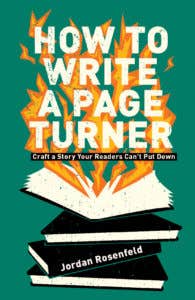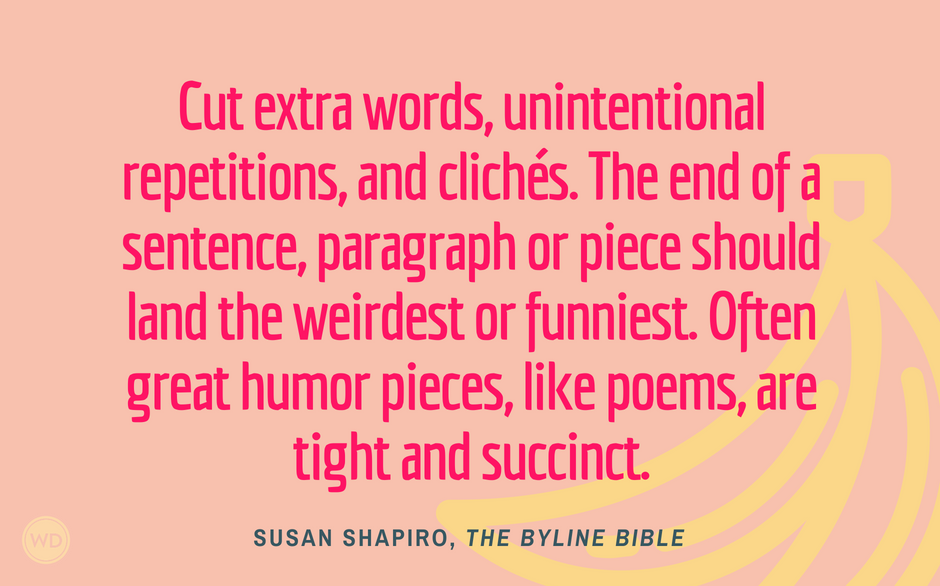Whether you’re dealing with just a few characters or a cast of thousands, creating what I call a “specific distinctive trait” for each will help your readers remember who each character is without you having to remind them in narrative. This means that instead of writing “Jean’s sister Emma” whenever Emma appears on the scene, you can instead illustrate something about Emma that readers already know to jog their memories.
Perhaps my favorite example of a writer employing this method occurs in Susan Minot’s Evening. Because most of this novel unfolds at a wedding, it includes an ensemble of characters. Minot helps readers remember who’s who by “tagging” each character with something that will remind readers of that character’s specific distinctive trait.
This approach allows Minot to place five or even ten characters in one scene without the reader losing track. To illustrate, here are two of the characters in two different scenes. In the first excerpt, we meet these characters for the first time.
The [car] doors were open and she saw in front Buddy Wittenborn and in the driver’s seat Ralph Eastman …. When she got close Ralph caught sight of her and jumped out of the car and Buddy looked over with a lazy smile.
This second excerpt takes place the morning of the wedding about halfway through the book.
Pacing down near the pink mallow was Ralph Eastman holding a piece of paper, gesturing with his hands, practicing his toast …. When she came out of the trees she found the small round lawn occupied by Buddy Wittenborn lying asleep on his back with his bare feet crossed and with his hands folded on his chest ….
What can you deduce about Ralph Eastman and Buddy Wittenborn from these brief selections? Do you see how using a specific distinctive trait “on the run” helps you “see” a character?
The Telling Detail
This brings us to one of my favorite aspects of character, the telling detail. E.M. Forster notes that a novelist “may not choose to tell us all he knows—many of the facts, even of the kind we call obvious, may be hidden.” Beginning (and some not-so-beginning) writers often feel as if they must give every detail about a character, but if you do this, not only will your reader be frustrated, he still won’t see what’s in your head. I’m not saying you shouldn’t note everything in your first draft—after all, a first draft is a wonderful way to find out what you’re trying to say. Ultimately, though, it’s the telling detail, and only the telling detail, that you’ll want to hang on to. I’ve co-opted the Greek term synecdoche (sin-NEK-toe-kee), a linguistic term that means the part stands for the whole (“bread” for food; “soldier” for army), to represent how the right telling detail insists the reader fill in what he doesn’t know. A good telling detail performs double—no, triple—duty, revealing setting, character, and plot all in one tidy line.
For an example of how this works, let’s get in someone else’s car. No, wait—we can’t get in, not yet, because first we have to pick up the various books and papers on the passenger seat and toss them in the back. Okay, now we can slide in … But, no: Now we see that the footwell has become the resting place for fast-food soft-drink cups, crumpled napkins, CD covers, even a hairbrush.
Okay. What do you know about the driver of this car from what I’ve just told you? The answer is that each of you will have conjured a different car and a different driver, based on your—you guessed it—resources of experience.
Getting Inside Your Reader’s Head
My attempts to explain how a telling detail leads the reader to fill in what he doesn’t know were made much simpler the first time I drew the following on a whiteboard:
Imagine the circle is your reader’s brain. When the right detail (the arrow) breaks through, it will explode in your reader’s head so he fills in all sorts of details you haven’t shown.
In a successful synecdoche, every reader will imagine a different picture of that car based on the telling details you choose to reveal. This is a good thing, because it means you’ve captured your readers’ imaginations. It’s also why, when we readers go to the movies, we’re almost never as happy with the film as we were with the book. Unless the character the director imagines segues perfectly with our own picture (an astronomical unlikelihood), we’re destined to be disappointed.
EXERCISE
Character Walks Into a Room
How do you codify the information you receive? Think about it: So much information comes our way every day that we have to have some way of quickly deciding what goes where. When it comes to people, you may use a method you’re not even aware of, such as the Myers-Briggs personality-type indicator, astrological signs, or even ethnic or racial stereotypes. We all need such systems, though we don’t always share them with others.
Whenever my dear friend Joanie walks into a restaurant, she immediately looks around the room to see who she knows, then stops to visit with each person. However, when I walk into that restaurant (with her, let’s say), I take in the whole room—what it looks and feels like, how many people are there, if it’s smoky, if it’s hot or cold. Then, as quickly as I can without drawing attention to myself (because the last thing a writer wants is to draw attention to herself), I find a quiet corner where I can watch everyone. My husband Bob, meanwhile, will be examining the construction materials, while another friend will likely already have noted what could stand improvement.
Quick now, before you think about it, what do you know about the four people I’ve just described entering this restaurant? This exercise combines almost everything we’ve discussed in this chapter: what you know about your character, the telling detail, and the specific distinctive trait.
Now it’s your turn. Walk into that restaurant yourself. What’s the first thing you notice? How about your partner? What does he or she see? Try it out with a few friends. (I’ve asked quite a few of mine since I came up with this, and I’m always surprised by their answers.)
Then, have a character walk into a restaurant. What does she notice? What does she miss? And where in the restaurant does she head as soon as she can?
What have you learned about your character from this exercise? It may well be just the telling detail your fiction needs.
Excerpted from The Mind of Your Story (Writer's Digest Books, 2008).








